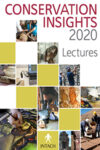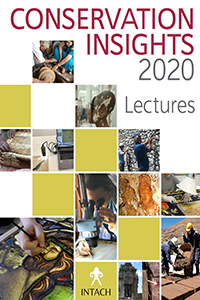Case Studies
Case Study on Shree Bhutnath Temple, Mandi , Himachal Pradesh
Sh. Bhutnath temple, Mandi, is made of sandstone in the year 1526 CE by Raja Ajber Sen. The temple is built in nagara style of architecture and is considered as the main guardian deity of the region. With time, modern alterations like the application of paint on stone surface affected the temple’s aesthetic appearance. The district administration of Mandi requested INTACH (a pioneer in art conservation) for the removal of the paint layer applied on the stone temple. The team from INTACH Conservation Institute, Delhi conserved and restored the temple of Sh. Bhutnath in record time starting from October 2012 to May 2013. The team also trained the locals during this project. With initiative and support of Mr Devash Kumar (IAS, DC Mandi 2012) and others, the project got completed in record time. You will see the journey of this project in this video including the deterioration problem, challenges faced and the conservation-restoration treatment used for the stone structure. The video will also help in understanding the modern alterations applied to the historic heritage structures. This video is an attempt to show the glimpse of effort put by the conservators and restorers to conserve and preserve our built heritage and to encourage their efforts.
Conservation and Restoration of Reverse Glass Paintings
INTACH, ICI Delhi received two reverse glass paintings from a private collector in the year 2019 for restoration and conservation. Both the reverse glass paintings depict lady figures in different postures with bold style, rich colors, and showing a mixture of Indian and western elements. This video is a compilation of introduction and how these reverse glass paintings are made and all the problems observed on the objects, challenges faced by the conservators/restorers during the treatment and how the treatments were carried out along with the pictorial representation done of each step taken by the restorer as well as the images of before and after conservation of the objects. The object was scientifically conserved and restored at INTACH Conservation Institute and was returned back to the owner with guidelines on its future care.
Conservation of Taxidermy
INTACH Conservation Institute presents a video on conservation of taxidermy- history, different type of mounting and stuffing procedures and problems observed in taxidermy due to rapid change in environmental condition, display, storage and challenges faced by conservators. The presentation also discusses the conservation methodology adopted at INTACH Conservation Institute centres including pest treatment, cleaning, stabilization and reintegration of losses after proper examination of materials and scientific analysis. The video includes pictorial representations of each step taken by the conservator as well as the images of pre and post conservation of this object.
Conservation Project: Museum of Christian Art (MOCA), Goa
The Museum of Christian Art, Convent of Santa Monica, Old Goa, is a home to some of the most exquisite collection of Indo- Portuguese Art in India The museum was formed with the technical and financial assistance of Indian National Trust for Art and Cultural Heritage(INTACH), New Delhi and Calouste, Gulbenkian Foundation in Lisbon. Comprised of around 200 pieces, the Museum symbolizes an effort to showcase the richness of Indo-Portuguese Christian Art from Goa. INTACH- ICI, New Delhi conserved this collection from July 2018 till April 2019. Two conservation trainees were selected from Goa who were trained on job at a temporary Lab Space created inside the church. This video is a journey of the conservation project, the challenges faced, the deterioration patterns the treatment process and post conservation care of Ivory, metal, textile, polychrome wooden sculptures, panel paintings, furniture and other sacred objects in the collection of the museum with an example of some of the treatment approaches. Its an attempt to give a glimpse of the effort put by the conservators and restorers to reinstate the glory of our heritage. As a conservation institute we also train and do capacity building programs for Museums and other establishments which are repositories of art and cultural heritage.
Conservation of Textile Painting: Pabuji ka Phad; private collection
A painting on cloth “Pabuji ka Phad” was received at INTACH ICI Delhi Centre for its conservation in the year 2018. In the painted textile the main figure is Pabuji, hence it is called as Pabuji ka Phad. Phad painting is a beautiful form of folk art of Rajasthan. It is an art form approximately 700 years old, on a long horizontal painted cloth linked to the lively tradition of storytelling, music and performance achieved through specific style of representation. Phad finds its origins in Shahpura, near Bhilwara, Rajasthan. The local deities of Rajasthan ‘Pabuji’ and ‘Devnarayanji’ are the principal subject and the paintings are based on their life.This art form is hereditary. It mainly involves two groups of people one is the ‘Chitrakar’ or the painter and the other one is ‘Bhopa’ or narrator who explains the nuances of each scene depicted on the large painting. This video is a compilation of problems of deterioration observed on the object and how the treatments of conservation and restoration were carried out along with the pictorial representations of every step taken by the conservator, this is supplemented by the images of before and after conservation of this object. Detailed scientific investigations were carried out under higher magnifications to understand the problems of deterioration in the object and to identify different pigments as well as the anatomy of the object, this helps in laying down proper conservation treatment of the object. All the restoration and conservation treatments given to the object are reversible in nature and will not cause any kind of physical or chemical harm to the object. The object was scientifically preserved at INTACH Conservation Institute and returned back to the owner with guidelines on its maintenance in future. The treatment procedures have helped in increasing the life of the art form for many years if it is looked after well.
Conservation of Oil Painting:1 The Parable of Sower by Edwin Long; collection of SSSIHL, Puttaparthi
An Oil Painting titled “The Parable of the Sower” from Sri Sathya Sai Institute of Higher Learning, Puttaparthi, A.P., was an on-site conservation and restoration treatment work undertaken by INTACH Conservation Institute. A pre-conservation assessment of the painting was done on 23rd May, 2014. The conservation treatment of the painting was completed on 30th July, 2019 in the premises of Administrative Block of the Trust. “The Parable of the Sower” is the one of the finest works of the artist Edwin Long (12 July, 1829-15 May, 1891) which was completed by him during the last days of his life. The painting is an artistic representation of “The Christ preaching at the shores of Galilee.” It describes the realism of social, political and the economic world in which the parable is told by Jesus where he gives a vision on how to cope in exploitative world. This video is the pictorial representation of conservation treatment of the painting which focuses on the problems observed, treatment given and the challenges faced by the conservators/ restorers as well as images of before and after conservation of the painting. The painting was preserved on-site and finally installed at the display position, the staircase wall of second floor, Administrative Block.
Case Study of a Lacquer Object
INTACH Conservation Institute presents a case study of Conservation and restoration of a Lacquer Buddha also known as the ‘Parinirvana Buddha’. This object was owned by a private collector and during transportation this object fell and was broken into many pieces. Hence, it came to our Lab in Delhi in year 2014 for restoration. This video is a compilation of problems observed on the objects, challenges faced by the conservators / restorers during the course of treatment and how the treatments were executed based on scientific analysis of materials and technology of making if the art form along with pictorial representations of each step taken by the conservator as well as the images of pre and post conservation of this object.
Case Study of Raavananugraha
A polychrome sculpture of ‘Ravananugraha’ from Prime Minister’s Office was received at INTACH ICI Delhi centre for conservation and restoration. A pre conservation assessment of the object was done at PMO, south block on 27th May 2014. The conservation treatment of this object was completed on 12 Dec 2014. The top portion consisted, polychrome sculptures of Shiva and Parvati with their attendants. These sculptures were positioned over Ravana, separating both of the parts with a wooden plank. The second portion of the sculpture is the main figure of Ravana with ten heads; he has been shown as lifting Shiva and Parvati over his head and shoulder. The third portion of the entire structure is a plain wooden base. The mythological story of Ravananugraha has been narrated in this video. This video is a compilation of problems observed on the objects, challenges faced by the conservators/restorers during the course of preservation treatment and how the treatments were executed along with pictorial representations of each step taken by the restorer as well as the images of pre and post conservation of this object. The polychrome object was scientifically preserved at INACH Conservation Institutes and returned back to the PMO with guidelines on its maintenance in future.











